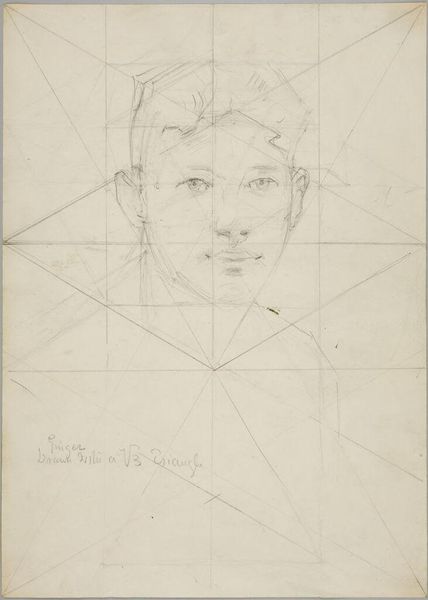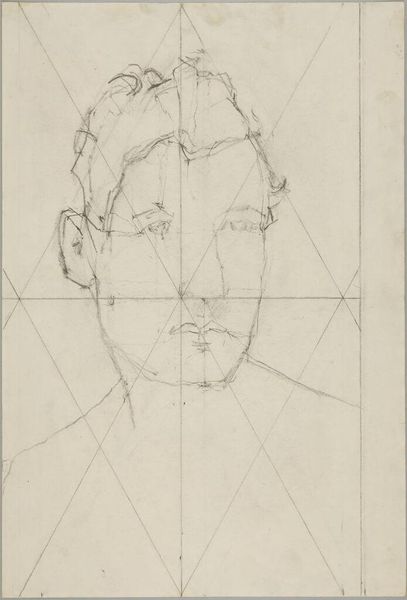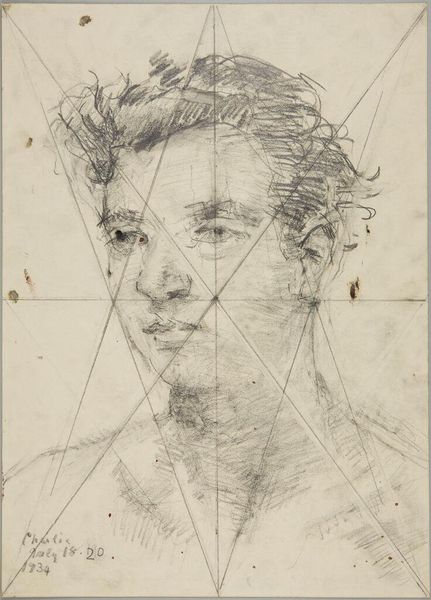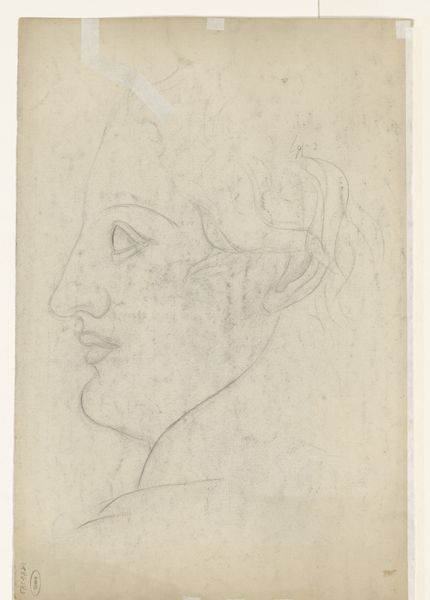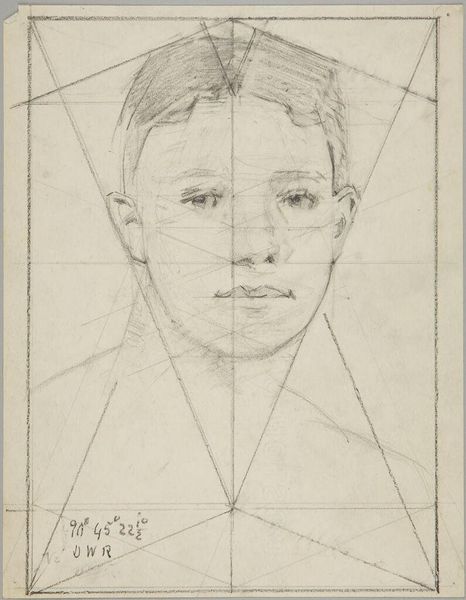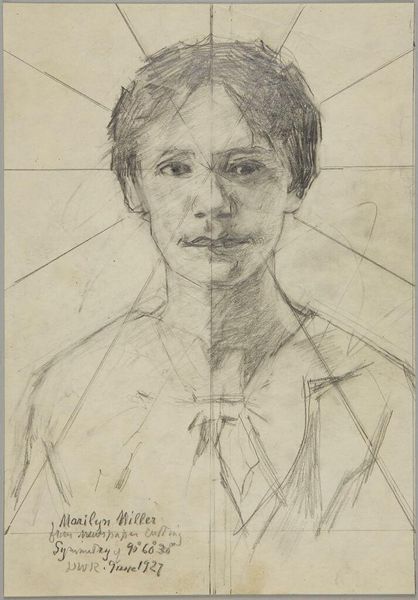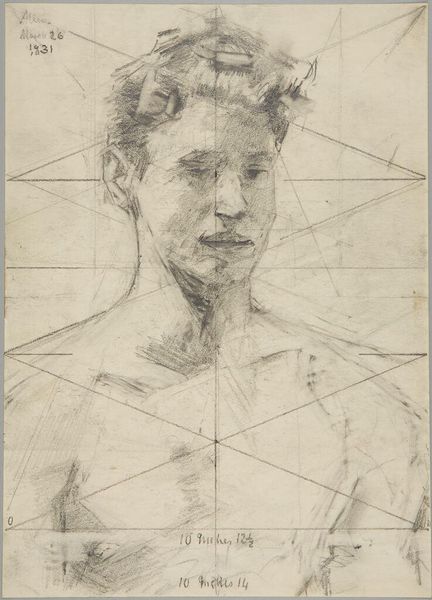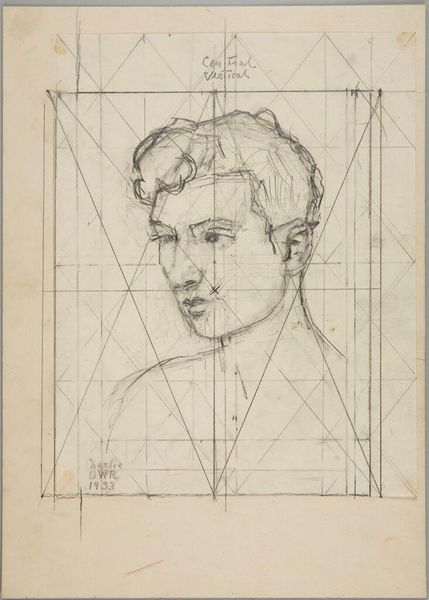
Dimensions: actual: 35.6 x 25.5 cm (14 x 10 1/16 in.)
Copyright: CC0 1.0
Curator: Here we have Denman Waldo Ross's "Study for a Portrait of Charlie Parker," held at the Harvard Art Museums. The medium is listed as graphite on paper, measuring about 14 by 10 inches. Editor: My first impression is the visible grid and geometric lines. It feels almost architectural, like a blueprint for a face rather than a free-flowing portrait. Curator: Right. Ross was deeply interested in theories of visual harmony. The grid would serve as a structure for his artistic explorations, much like the structures Parker created in his own musical compositions. Editor: It's fascinating to see that underlying structure laid bare. It reveals the mechanics of representation, how Ross dissects and reconstructs Parker’s likeness through line and proportion. Curator: Consider the cultural context: Ross, a privileged academic, attempting to capture the essence of Parker, a Black jazz musician, during a time of segregation. It speaks to art's complex role in bridging, or failing to bridge, societal divides. Editor: And yet, through those very lines, there's a sense of the ephemeral, a capturing of something fleeting, like a musical riff fading in the air. It's more than just a study; it's a visual experiment. Curator: Ross’s attempt at objective beauty contrasts with Parker’s subjective expression. It prompts questions about artistic interpretation across different social experiences. Editor: Indeed, it’s a fascinating glimpse into the artist's process, revealing the intellectual framework underlying the creative act. Curator: It's a powerful illustration of how art can serve as a bridge but also highlight the chasms of historical and cultural difference.
Comments
No comments
Be the first to comment and join the conversation on the ultimate creative platform.
